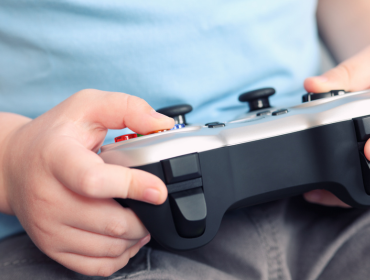Gamers thumb, also known as thumb tendinitis or de Quervain’s tenosynovitis, is a condition caused by repetitive thumb and wrist movements, commonly seen in gamers. Here are the information you need about it.
What is a Gamer’s Thumb?
Gamer’s Thumb is a repetitive strain injury affecting the tendons in the thumb. It often results from prolonged gaming or activities that involve repetitive thumb movements. This condition can also affect musicians, office workers, and others who perform repetitive hand movements.
Gamers Thumb Symptoms
The symptoms of Gamer’s Thumb can vary in severity but typically include:
- Pain at the Base of the Thumb: A sharp or aching pain near the base of the thumb, especially when gripping or holding objects.
- Swelling: That happens at the thumb joint or along the wrist may be noticeable.
- Limited Thumb Movement: Difficulty moving the thumb or wrist, particularly with tasks that involve gripping, pinching, or twisting motions.
- Tenderness: The area around the thumb joint may feel tender to the touch.
- Pain with Specific Movements: Pain often worsens when performing activities such as gaming, texting, typing, or other repetitive hand movements.
- Weakness: Decreased strength in the hand, making it harder to hold or manipulate objects.
If these symptoms are left untreated, they can worsen over time.
Causes of Gamer’s Thumb
The primary cause of Gamers Thumb is repetitive stress or overuse of the thumb and wrist tendons, particularly from activities that involve extended use of a controller, keyboard, or smartphone.
The risk factors include:
- Repetitive Motion: Constantly using the thumb in repetitive motions—such as pressing buttons, moving a joystick, or swiping on a screen—places strain on the tendons, leading to inflammation.
- Improper Ergonomics: Poor posture or hand positioning while gaming or using devices can increase stress on the thumb and wrist, contributing to the development of tendinitis.
- Extended Gaming Sessions: Long periods of gaming without breaks can cause overuse of the tendons, leading to strain and irritation.
- Poor Grip: Gripping the controller or device too tightly can increase the strain on the thumb, causing microtears in the tendons over time.
- Lack of Rest: Not taking sufficient breaks between gaming or using devices can prevent the tendons from recovering, leading to inflammation and pain.
- Underlying Health Issues: Conditions like arthritis or previous injuries can make the tendons more prone to irritation and damage from repetitive movements.
Diagnosis
A healthcare professional can diagnose Gamers Thumb through a physical examination and tests like the Finkelstein test, where bending the thumb into the palm and moving the wrist can trigger pain. Imaging tests like ultrasound or MRI may be used for confirmation.
Treatment Options
Treatment for Gamer’s Thumb typically focuses on relieving pain, reducing inflammation, and promoting healing. Here are some common treatment options:
- Rest and Activity Modification: The most important step is to reduce or stop the activity that is causing the strain, such as gaming or texting. Giving the thumb and wrist time to rest allows the tendons to recover.
- Ice Therapy: Applying ice or a cold compress to the affected area for 15–20 minutes several times a day can help reduce swelling and inflammation.
- Over-the-Counter Pain Relievers: Nonsteroidal anti-inflammatory drugs (NSAIDs), like ibuprofen or aspirin, can help manage pain and reduce inflammation.
- Splinting or Bracing: Using a thumb splint or brace can immobilize the thumb and wrist, providing support and reducing strain on the tendons while they heal.
- Stretching and Strengthening Exercises: Gentle stretching and strengthening exercises for the thumb and wrist, once the pain has reduced, can help improve flexibility and prevent future injury.
- Ergonomic Adjustments: Improving posture and hand positioning while gaming or using devices can help reduce strain. Consider using ergonomic controllers, adjusting seating arrangements, and taking regular breaks.
- Physical Therapy: A physical therapist can guide you through specific exercises designed to promote healing, reduce pain, and strengthen the affected area.
- Corticosteroid Injections: If pain and inflammation persist despite conservative treatments, a doctor may recommend corticosteroid injections to reduce swelling and promote healing.
- Surgery: In severe cases that do not respond to other treatments, surgery may be considered to release the tendon sheath and relieve pressure on the tendons. However, this is typically a last resort.
It’s important to know that addressing the condition early and adopting preventive measures, most people recover from Gamer’s Thumb with conservative treatments.


